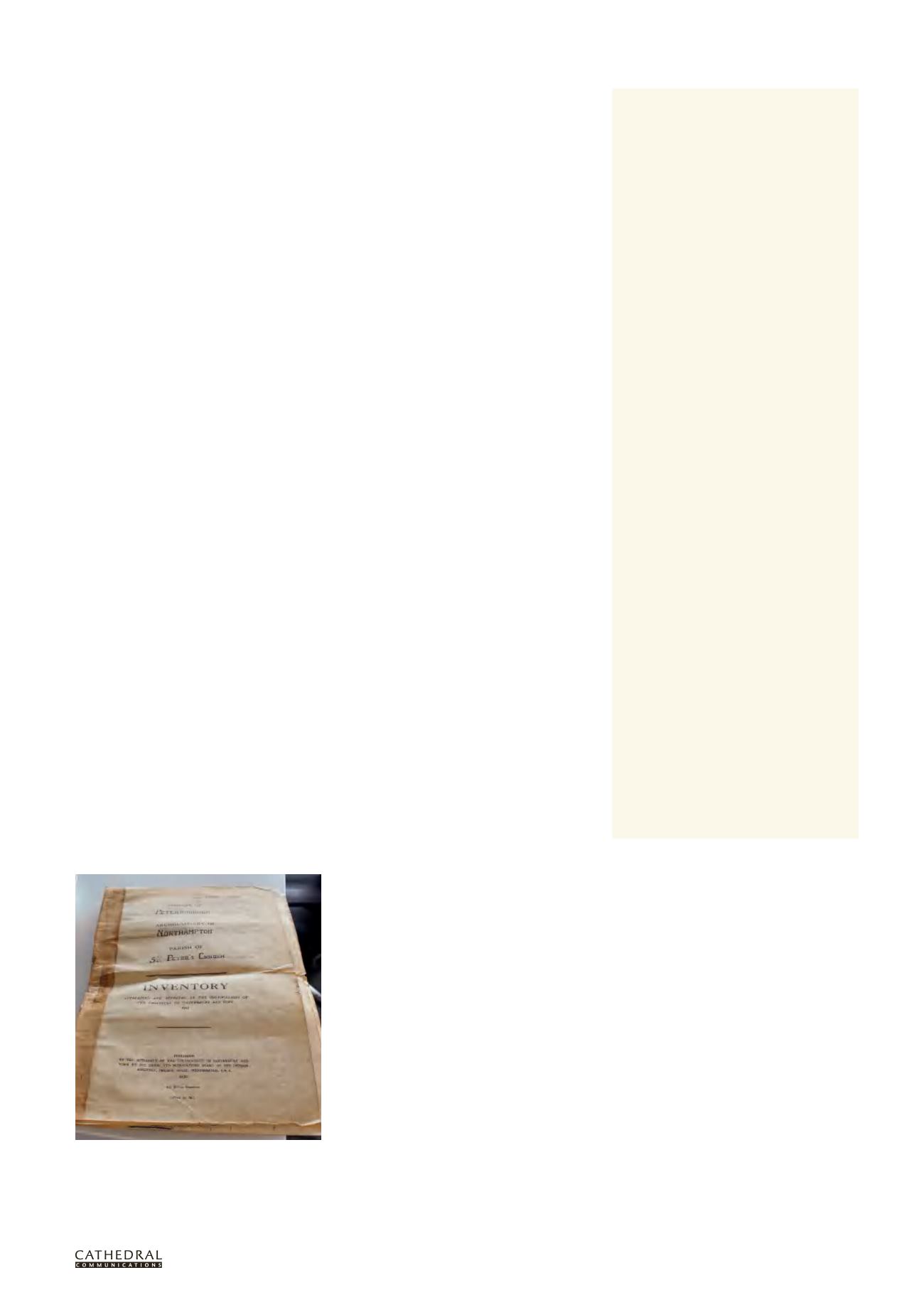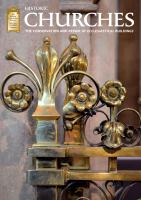

BCD SPECIAL REPORT ON
HISTORIC CHURCHES
22
ND ANNUAL EDITION
35
are dispersed across the country and so
there is a further cost and time factor to
retrieving information. There are central
files and then files held in the regions,
mostly in staff home offices. This leads
to another challenge as it is not easy to
see where all the information relating
to a church is, and there is inevitably a
diversity of filing practice.
The dawning of the digital age has
helped considerably with record-keeping.
In particular all of the trust’s regular
inspection reports are held on its servers
and the majority of project work is also
held digitally. This information is freely
available across the CCT, leading to a
much speedier and more efficient recall.
It is important to remember that despite
being digital there is still a considerable
cost to storing this information, especially
as it includes many high resolution
photographs recording everything from
stone samples to beetle damage.
The CCT has been working very hard
on the most effective method of storing
and recalling this information. This is
no mean challenge as there are around
50 staff all producing information and
trying to ensure that it is consistently
filed. The CCT has invested in an
internet-based property management
system to address this challenge.
Large capital works to the
trust’s churches always begin with
an assessment of significance. This
extremely useful document brings
together what we know about a church
and also highlights what we do not
know. There is a thorough search of the
obvious sources of information, records
office material, the CCT archives and
anything else that can be found. This
is sometimes the first opportunity to
bring together and compare all the
known records for a church and it is
essential to understanding how one
might go about altering the fabric.
The reports are set out so that
whatever documentary evidence is found
can be used to reinforce what we see in
the actual stones (or brick) of the building.
The reports also seek to understand what
we call the ‘communal value’ of the church
– the value which the local community
places on the church, the churchyard or
a specific element or feature of either.
Establishing communal value is essential
as it is very easy for an architectural
historian who does not know the local
context to understate the significance
of an element of a church which the
community values highly.
The gathering of all the available
information allows the CCT to assess
the relative significance of the parts
of the church and enables us to make
informed decisions about how and where
21st-century additions and alterations
might be made. In the vast majority of
cases, ancient churches have experienced
considerable change over time as
successive generations have improved
or demolished bits in order to adapt the
building to current fashions, politics or
practical needs.
For the trust to make its own positive
contribution to the ongoing story of
these churches, we need to understand
all that has come before. With a sound
understanding of the development of the
historic church it can be quite surprising
as to what alterations can be justified and
what loss of historic fabric can be borne.
Church records can also simplify the
decision-making process especially if
they reveal, for example, where previous
doorways were positioned. The CCT is
opening former doors on two medieval
churches, St Mary-at-the-Quay, Ipswich
and St Peter’s in Sandwich, Kent. Here the
fabric of the building holds some strong
evidence, but the justification for the
works is held in the documentation that
we have gathered.
In conclusion, the more you know
about a historic church the better the
decisions about repairs and alterations
will be. As information technology
improves, so does our ability to capture
and process data. I look forward to the
day when we are recording actions in the
trust’s churches in real time in a seamless
integrated online fashion. We are not
there yet but this is the direction of travel.
It is also important to remember that
what is ultimately stored in the records is
more than just information – lurking in
this technical data are some wonderful
stories and mysteries which are waiting to
be released.
Further Information
British Standards Institution,
BS 7913
Guide to the Principles of the Conservation
of Historic Buildings
, London, 2013
Chapter and Verse: The Care of Cathedral
Records
, Cathedral Libraries and Archives
Association and the Church of England
Record Centre, 2013 (available online
at:
www.lambethpalacelibrary.org/files/chapter_and_verse_june_2013.pdf)
S Crofts, ‘Church Wardens and Church
Fabric’,
Historic Churches 2008
, Cathedral
Communications, Tisbury, 2008
PETER AIERS
is the director of the
South East region and head of regeneration
at The Churches Conservation Trust (www.
visitchurches.org.uk), the national charity that
protects historic churches at risk.
BEST PRACTICE
Churches typically maintain three
core records: the terrier, the inventory
and the log book. The terrier and the
inventory are lists of, respectively, the
land and the objects which belong to
the church and are sometimes combined
into a ‘church property register’.
The log book is a record of the alterations
and repairs carried out to the church, its
land and its contents. This information has
many important uses: aiding insurance
claims or the recovery of stolen goods,
providing useful source material for local
historians and other researchers and,
above all, informing and guiding the
sympathetic conservation of the church,
its surroundings and contents.
The type, detail and quality of records
kept will vary widely not just between
denominations but from one historic place
of worship to the next. From a building
conservation perspective, however, the
records should include:
•
•
a statement of significance, if one exists,
as well as any architectural plans or
technical drawings that are available
•
•
instructions and schedules for
maintenance and inspection regimes
along with their results such as
quinquennial inspection reports
•
•
a detailed account of any work carried
out on the building and its historic
contents
•
•
the contact details of key people
involved in caring for the fabric such
as maintenance contractors and the
quinquennial architect
•
•
procedures to protect church fabric and
contents in an emergency, for example
in the event of flooding.
Finally, it is a good idea to take copies of
important records and store them off-site.
A church inventory dating from the 1930s: the inventory
is a list of all the objects owned by a particular church.
Land owned by the church is listed in a ‘terrier’
(derived from the Latin
terra
, meaning earth).
















